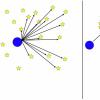
Nicotinamide Riboside vs. Nicotinamide + Ribose
#151
Posted 24 September 2017 - 12:55 AM
Glucose. So you get a super charged spike in d-ribose that might be much more than you take.
#152
Posted 24 September 2017 - 07:25 AM
If you would have actually read the study at the link then you would have noticed that it is a direct comparison of the impacts between ribose and glucose. Well here the summary on that:@Stefan (post #146) and MikeDC (post #145), I made no assertions as to the validity of the claims made in the article that I posted a link to in #144. I merely posted the information as a counterpoint to claims made in this thread (hint, take a look at my nick).
@Stefan in your post #146 you write "Meanwhile, D-Ribose-gavaged mice suffer from both Aβ-like deposition and Tau hyperphosphorylation in their brain, especially in the hippocampus. ".
Consider this article (High glucose induces formation of tau hyperphosphorylation via Cav-1-mTOR pathway: A potential molecular mechanism for diabetes-induced cognitive dysfunction). Takeaway--Glucose also will induce tau hyperphosphorylation.
I personally don't know to what extent, if any, that ingestion of small amounts of D-ribose may be any more harmful than glucose in advancing glycation. I suspect that people ingest more glucose on a daily basis than 5gms D-ribose, for example.
-Under the tested conditions, the oral administration of D-Ribose to mice is much more effective in triggering Tau hyperphosphorylation than D-Glucose, especially in the hippocampus.
Edited by stefan_001, 24 September 2017 - 07:44 AM.
#153
Posted 24 September 2017 - 09:55 PM
#154
Posted 24 September 2017 - 10:18 PM
For a Tau hyperphosphorylation comparison of glucose with ribose, see Fig. 2b in this paper. For mice given injections of either sugar for 30 days at doses of 0.2 or 2 g/kg, there is a substantial difference at 2g/kg.
Edited by Turnbuckle, 24 September 2017 - 10:19 PM.
#155
Posted 24 September 2017 - 10:30 PM
I was referring to the oral gavage study I cited earlier. I would say Aβ-like product levels approx 3 x more, Tau hyperphosphorylation about 1.5-2 depending on glucose dose. The study contains all the graphs, blots etc to back up the numbers, have a look for yourself:stefan, since you apparently have read the article (your implication) please relate the extent to which "...the oral administration of D-Ribose to mice is much more effective in triggering Tau hyperphosphorylation than D-Glucose, especially in the hippocampus.". But, give a number that reflects "much more effective" (whatever that means) as per your "summary" precis (post #152).
For example, cite a sentence or passage in the article that states something such as this hypothetical example: "D-ribose triggers 10 times as much Tau hyperphosphorylation as D-glucose for equivalent doses". That is clearly something that at least one reader (me) would expect to be in the article in order for the article to actually credibly maintain and quantify that which might be construed as being "effective" by some readers, right? (good luck). Also, you might want to explain the mysterious effect of low-dose D-glucose (since you've read the article you'll know what I'm referring to).
A number indicating the relative effectiveness of the extent to which D-ribose triggers Tau hyperphosphorylation in comparison to D-glucose (D-glucose essentially suggesting ingestion and conversion of non-fiber, non-resistant carbohydrates) is important to know in order to be able to estimate what might be a net effect of 5gms D-ribose ingestion, for example, (5gms is the maximum D-ribose dose in Turnbuckle protocols, as of this writing, excluding the possibility of next-day augmentation, which is a recent suggestion) on triggering Tau hyperphosphorylation .
Gavage of D-Ribose induces Aβ-like deposits, Tau hyperphosphorylation as well as memory loss and anxiety-like behavior in mice
https://www.ncbi.nlm...41/#!po=14.1026
I am looking forward to seeing your demand for credibility, numbers being displayed on every statement in this discussion.
Edited by stefan_001, 24 September 2017 - 10:33 PM.
#156
Posted 24 September 2017 - 11:47 PM
For a Tau hyperphosphorylation comparison of glucose with ribose, see Fig. 2b in this paper. For mice given injections of either sugar for 30 days at doses of 0.2 or 2 g/kg, there is a substantial difference at 2g/kg.
Can you explain what this means in layman's terms? I'm a little lost on this one.
Edited by Nate-2004, 24 September 2017 - 11:48 PM.
#157
Posted 25 September 2017 - 01:27 AM
For a Tau hyperphosphorylation comparison of glucose with ribose, see Fig. 2b in this paper. For mice given injections of either sugar for 30 days at doses of 0.2 or 2 g/kg, there is a substantial difference at 2g/kg.
Can you explain what this means in layman's terms? I'm a little lost on this one.
I'm a little C57BL/6 mouse, and I'm one of the many forgotten heroes of science: if you inject D-ribose into me for three months then it'll mess with my brain more than if you inject me with D-glucose for three months.
My heroism is measured by Morris water mazes, they're no fun at all, then I'm decapitated, my brains are dissected, whatever, more data and more publishing and papers, etc, etc...
#158
Posted 25 September 2017 - 07:08 AM
Edited by Advocatus Diaboli, 25 September 2017 - 07:10 AM.
#159
Posted 25 September 2017 - 07:36 AM
Great calculation, I like it when people try to create facts. I hope you will demonstrate an equal analytics approach to the other topics here.
Nevertheless I dont agree with your conclusions. The Aβ-like product levels are more than 3x in the hippocampus, see figure c in the image attached. In fact you will see that the sugar caused product levels are the same as control. So ribose is doing damage that sugar doesnt. This is a different ball game obviously. Whatever sugar does, the body handles it.
I would think you agree that when using 250mg or 500mg NR ever day you avoid pretty much any risk. Personally I avoid using sugar addings and certainly dont put any in my coffee, afterall you dont get anti or healthy aging out of a single pill or single protocol. Every bit counts. And wow you said you put 5 cubes of 4 gram = 20 gram sugar in your coffee!
What does your calculation indicate for the NAD+ increase the D-Ribose will bring you? If you half it do you still get enough? Why not just 0.5 gram? Why not 100gram? Which graph do you base that calculation on?
Attached Files
Edited by stefan_001, 25 September 2017 - 08:09 AM.
#160
Posted 25 September 2017 - 08:47 AM
Personally I avoid using sugar addings and certainly dont put any in my coffee, afterall you dont get anti or healthy aging out of a single pill or single protocol. Every bit counts. And wow you said you put 5 cubes of 4 gram = 20 gram sugar in your coffee!
Its off topic but to avoid a debate on sugar amount please send your argument to the AHA:
"The American Heart Association (AHA) recommends limiting the amount of added sugars you consume to no more than half of your daily discretionary calories allowance. For most American women, that’s no more than 100 calories per day, or about 6 teaspoons of sugar. For men, it’s 150 calories per day, or about 9 teaspoons. The AHA recommendations focus on all added sugars, without singling out any particular types such as high-fructose corn syrup. For more detailed information and guidance on sugar intake limits, see the scientific statement in the August 2009 issue of Circulation, Journal of the American Heart Association"
A teaspoon in their calculation is 4 grams so that makes 36 grams for men and 24 grams for women. The major sources of added sugars are regular soft drinks, sugars, candy, cakes, cookies, pies and fruit drinks (fruitades and fruit punch); dairy desserts and milk products (ice cream, sweetened yogurt and sweetened milk); and other grains (cinnamon toast and honey-nut waffles).
Edited by stefan_001, 25 September 2017 - 08:54 AM.
#161
Posted 25 September 2017 - 01:15 PM
Isn't 2g in a mouse completely different than 5g in a human? Also, this is mice, not humans, so we don't know if this even affects humans in the same way.
Edited by Nate-2004, 25 September 2017 - 01:16 PM.
#162
Posted 25 September 2017 - 02:02 PM
Isn't 2g in a mouse completely different than 5g in a human? Also, this is mice, not humans, so we don't know if this even affects humans in the same way.
Hi Nate, I think everything that can be said it pretty much said so people do what they do. The only other perspective is to calculate the mouse dose from the 5gram ribose proposed here. Lets assume you way 70kg then than gives 0,071gram /kg which translates into 0,87gram/day mouse dosing, So looking in the graph you end up in the middle or so of the doses they used as the behavior doesnt look linear. You judge is that insignificant.
Edited by stefan_001, 25 September 2017 - 02:15 PM.
#163
Posted 25 September 2017 - 03:21 PM
stefan, I did a calculation for fig. 5©. I estimate that high D-ribose (3.75) is about 3.25 in the given units. And that for high D-glucose (4.75) it's about 0.9 for a factor of about 3.6, which agrees well with your more than 3x estimate. I would have done the calculation on 5© for my earlier post, but as you can see by the time stamp that it was late in my time zone and the omission wasn't intentional.
In post #155 you state an upper limit estimate of 2 for "Tau hyperphosphorylation about 1.5-2 depending on glucose dose.". How did you arrive at the "2"?
You wrote in post #159: "Whatever sugar does, the body handles it." So this applies only to mice, or does it apply equally to men also?
"I would think you agree that when using 250mg or 500mg NR ever day you avoid pretty much any risk." My initial trial of Turnbuckle protocol was once a week (so, I'm a wimp) with 5gms D-ribose. I suspect that my daily average of D-ribose was comparable to the daily D-ribose from a 500mg dose of NR. Although there are probably considerations owing to the differences in a large one-time Turnbuckle bolus of 5gms and the small daily dose with NR.
"And wow you said you put 5 cubes of 4 gram = 20 gram sugar in your coffee!" Heh heh, mea culpa, I have a bad sweet tooth! And remember thats in 24oz of coffee spread throughout the day. My latest A1C's were 4.5 percent on both 2/27/2017 and on 8/5/2017 helped along with metformin.
There are considerations about the use of D-ribose in Turnbuckle protocol that I won't get into at the moment because they are speculative, but if true the 5gms D-ribose means zilch in terms of adverse effects.
Edited by Advocatus Diaboli, 25 September 2017 - 03:52 PM.
#164
Posted 25 September 2017 - 05:22 PM
Isn't 2g in a mouse completely different than 5g in a human? Also, this is mice, not humans, so we don't know if this even affects humans in the same way.
Hi Nate, I think everything that can be said it pretty much said so people do what they do. The only other perspective is to calculate the mouse dose from the 5gram ribose proposed here. Lets assume you way 70kg then than gives 0,071gram /kg which translates into 0,87gram/day mouse dosing, So looking in the graph you end up in the middle or so of the doses they used as the behavior doesnt look linear. You judge is that insignificant.
This isn't clear to me. Are those commas decimal places? I weigh about 80kg what is the Human Equivalent Dosage per kg? 0.071g/kg or 0.87g/kg?
#165
Posted 25 September 2017 - 08:59 PM
"And wow you said you put 5 cubes of 4 gram = 20 gram sugar in your coffee!" Heh heh, mea culpa, I have a bad sweet tooth! And remember thats in 24oz of coffee spread throughout the day. My latest A1C's were 4.5 percent on both 2/27/2017 and on 8/5/2017 helped along with metformin.
There are considerations about the use of D-ribose in Turnbuckle protocol that I won't get into at the moment because they are speculative, but if true the 5gms D-ribose means zilch in terms of adverse effects.
Ofcourse in the end people make their own considerations. I have used NR pretty much non stop for almost 1000 days at about 500mg / day with from my perspective very good effects. That makes 500 grams alltogether. I cannot imagine that for the next 1000 days I would consume 3kg NAM and 5kg Ribose instead based on a non proven theory..
Edited by stefan_001, 25 September 2017 - 09:01 PM.
#166
Posted 25 September 2017 - 09:05 PM
Isn't 2g in a mouse completely different than 5g in a human? Also, this is mice, not humans, so we don't know if this even affects humans in the same way.
Hi Nate, I think everything that can be said it pretty much said so people do what they do. The only other perspective is to calculate the mouse dose from the 5gram ribose proposed here. Lets assume you way 70kg then than gives 0,071gram /kg which translates into 0,87gram/day mouse dosing, So looking in the graph you end up in the middle or so of the doses they used as the behavior doesnt look linear. You judge is that insignificant.
This isn't clear to me. Are those commas decimal places? I weigh about 80kg what is the Human Equivalent Dosage per kg? 0.071g/kg or 0.87g/kg?
Ah ok yes we use commas here. So then its like this:
"Lets assume you way 70kg then than gives 0.071gram /kg which translates into 0.87gram/day mouse dosing"
Here the HED conversions:
https://www.fda.gov/...s/ucm078932.pdf
anyways I am signing off in this thread, because I have nothing usefull anymore to add to the discussion. Good luck with your N + R experiment.
Edited by stefan_001, 25 September 2017 - 09:05 PM.
#167
Posted 13 May 2018 - 10:25 AM
Edited by Kentavr, 13 May 2018 - 10:27 AM.
#168
Posted 13 May 2018 - 04:19 PM
Hello!I see that there is a very big debate on this issue.I read, looked ... and this is what I think:Why not conduct a blood test for D-ribose after taking a nicotinamide ribozide or nmn?I do not think that analysis is so expensive, and it can be done at the university, who has such an opportunity.I think this is a good idea.You can even trace the dynamics if you do several tests in a row after taking the drug.
Hi Kentavr,
Did you see the date on the latest post here? The debate has moved on to other issues....
Also tagged with one or more of these keywords: nicotinamide riboside, nmn
1 user(s) are reading this topic
0 members, 1 guests, 0 anonymous users






























 This topic is locked
This topic is locked































